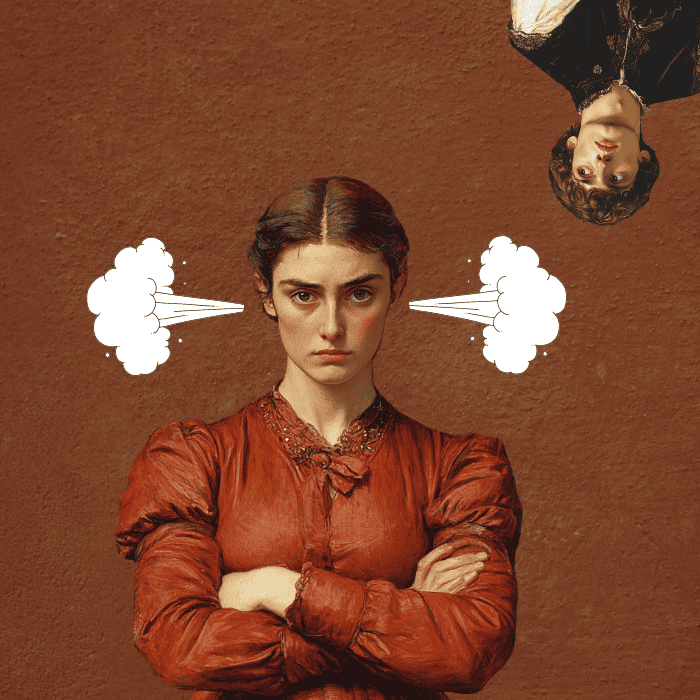Exploring the evidence that the works of Shakespeare were written by Edward de Vere, 17th Earl of Oxford
Exploring the evidence that the works of Shakespeare were written by Edward de Vere, 17th Earl of Oxford
The Shakespeare Plays / The Taming of the Shrew
Not a sexist disappointment, and less about behaving than learning how to “act.”
Professor Michael Delahoyde explores Shakespeare’s The Taming of the Shrew, the original rom-com that has dismayed a majority of audience members and readers who bring along their own assumptions and fail to look beneath stereotypes, like so many characters in the play itself.
In the set-up, a drunkard is tricked into thinking he’s a lord about to watch a play. The show features the power couple – Petruchio and Katherina, or Kate – who overshadow the other characters, several of them trying to woo Kate’s supposedly sweet, mild sister Bianca: daddy Baptista’s “treasure.”
Disguises lead to chaos, but Petruchio and Kate again steal the show with their own outrageous behavior, until Kate seems to undergo a surprising change in attitude. Is it abject subjugation? Or have we all been played?
Here are some general questions we address:

Shakespeare’s The Taming of the Shrew challenges audiences to consider subtleties beneath their preconceptions and stereotypical expectations. The comedy centers on a family in Padua, Italy, consisting of two sisters – Katherina (often called Kate) and Bianca – and their father, Baptista Minola, who has decreed that Bianca, the beautiful and seemingly mild-mannered younger sister who has many suitors, will not be made accessible to would-be wooers until Katherina, the headstrong and fiery older sister, is married first.
Katherina, known for her sharp tongue and rebellious nature, is considered a “shrew” by everyone around her. Petruchio, a confident and boisterous gentleman from Verona, arrives in town, and his Paduan friend Hortensio sees an opportunity to match him with the challenging Katherina, playing up the matter of her dowry. Petruchio is intrigued by what he hears of her spirit and plays along with the mercenary Paduan value system.
Petruchio aggressively pursues Katherina, they engage in hostile but witty exchanges, and he insists they marry. Despite Katherina’s initial rage, she does show up for the wedding. Petruchio embarks on a program of outdoing her outrageous behavior – a psychological trick that forces her into a different role than previously.
Meanwhile, the subplot involves Bianca and her various suitors – Lucentio, Gremio, and Hortensio. Lucentio, in love with Bianca, disguises himself as a tutor to get close to her. With the help of his servant, Tranio (who disguises himself as Lucentio), he outmaneuvers the other suitors and eventually marries Bianca.
The play ends with a controversial final scene where three newlywed couples – Katherina and Petruchio, Bianca and Lucentio, and Hortensio with “Widow” – attend a banquet. In a wager about which wife is most obedient, Katherina surprisingly proves to be the most compliant, delivering a speech on the importance of wifely obedience, leaving the other characters (and the audience) in shock and confusion.
The Taming of the Shrew was first published in 1623.
What works inspired the author?
Michael Delahoyde, The Taming of the Shrew, Overview and Act by Act.
Visit the website of Professor Michael Delahoyde, host of our series, for an act by act analysis and full treatment of Oxfordian themes in the play.
Stephanie Hopkins Hughes, “The Taming of the Shrew.” In Gilvary, Dating Shakespeare’s Plays. (2010): 91-100. Dating Shakespeare’s Plays.
Ramon Jiménez, The Playwright’s Progress: Edward de Vere and the Two Shrew Plays. The Oxfordian: Vol. 14: 047-073 (2012).
BOOKS
Ramon Jiménez, Shakespeare’s Apprenticeship: Identifying the Real Playwright’s Earliest Works. Jefferson, NC: McFarland & Co., Inc., Publishers, 2018. Chapter 4: 222-248. Jiménez definitively shows that the anonymous play published as The Taming of A Shrew was an early effort by Oxford and the source for his revised canonical play.
William Farina, De Vere as Shakespeare: An Oxfordian Reading of the Canon. Jefferson, NC: McFarland and Co., 2006. 44-48.
Sign up to our free email news mailing list to get invitations to attend Shakespeare Illuminated live!
Shakespeare Illuminated relies on the generosity of donors. To support the series or pick a play to sponsor, please contact us at info@shakespeareoxfordfellowship.org.
| Cookie | Duration | Description |
|---|---|---|
| cookielawinfo-checkbox-analytics | 11 months | This cookie is set by GDPR Cookie Consent plugin. The cookie is used to store the user consent for the cookies in the category "Analytics". |
| cookielawinfo-checkbox-functional | 11 months | The cookie is set by GDPR cookie consent to record the user consent for the cookies in the category "Functional". |
| cookielawinfo-checkbox-necessary | 11 months | This cookie is set by GDPR Cookie Consent plugin. The cookies is used to store the user consent for the cookies in the category "Necessary". |
| cookielawinfo-checkbox-others | 11 months | This cookie is set by GDPR Cookie Consent plugin. The cookie is used to store the user consent for the cookies in the category "Other. |
| cookielawinfo-checkbox-performance | 11 months | This cookie is set by GDPR Cookie Consent plugin. The cookie is used to store the user consent for the cookies in the category "Performance". |
| viewed_cookie_policy | 11 months | The cookie is set by the GDPR Cookie Consent plugin and is used to store whether or not user has consented to the use of cookies. It does not store any personal data. |